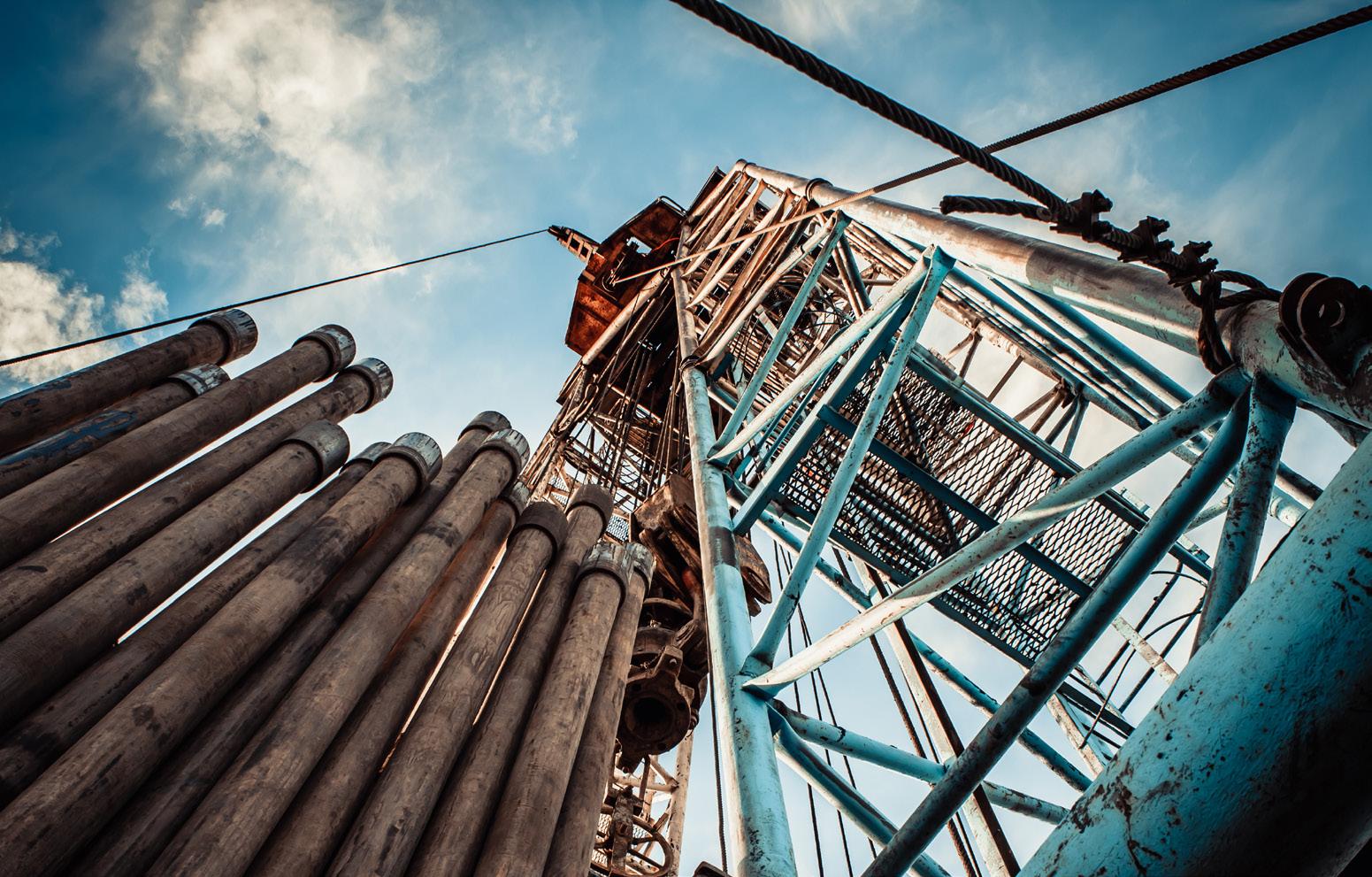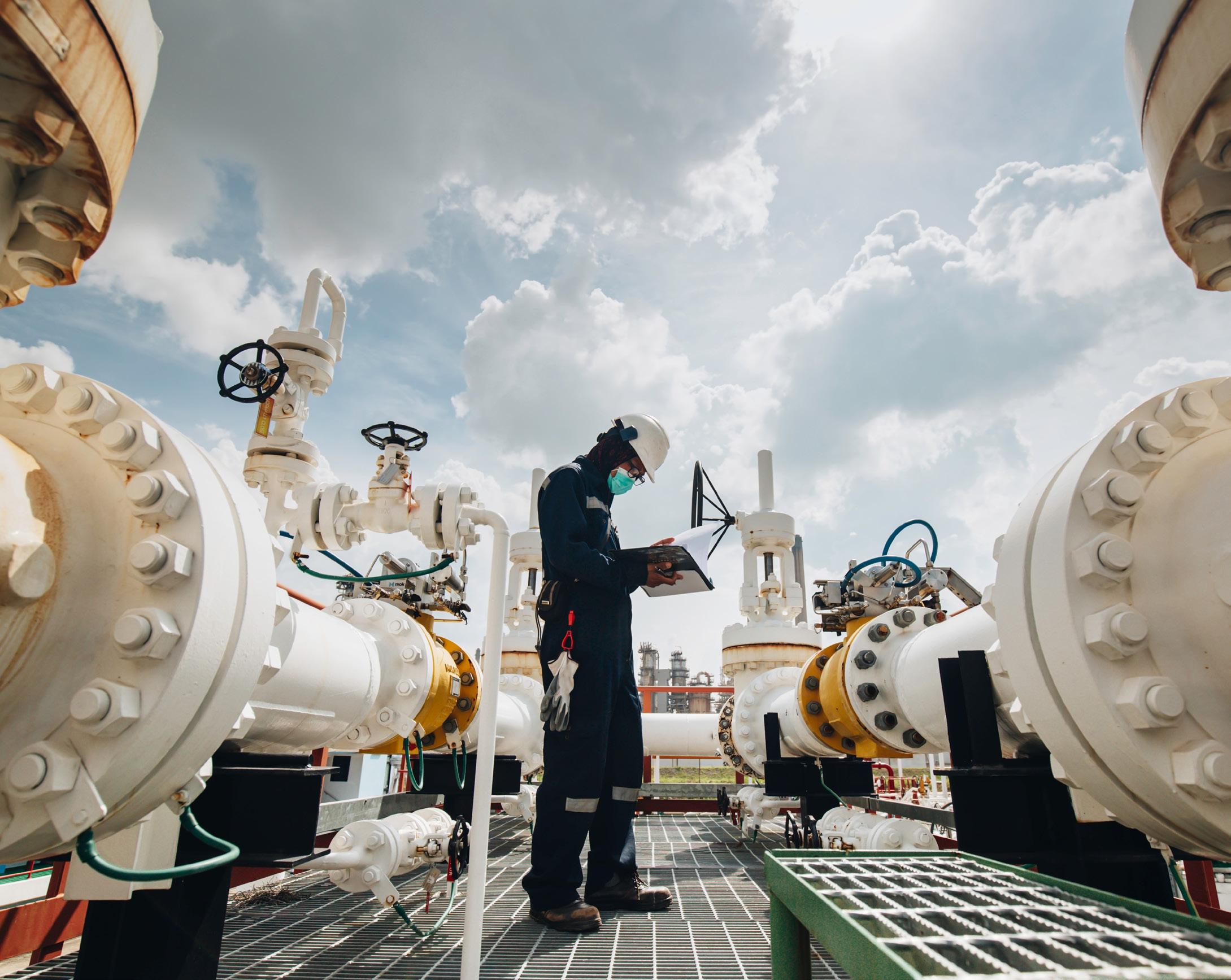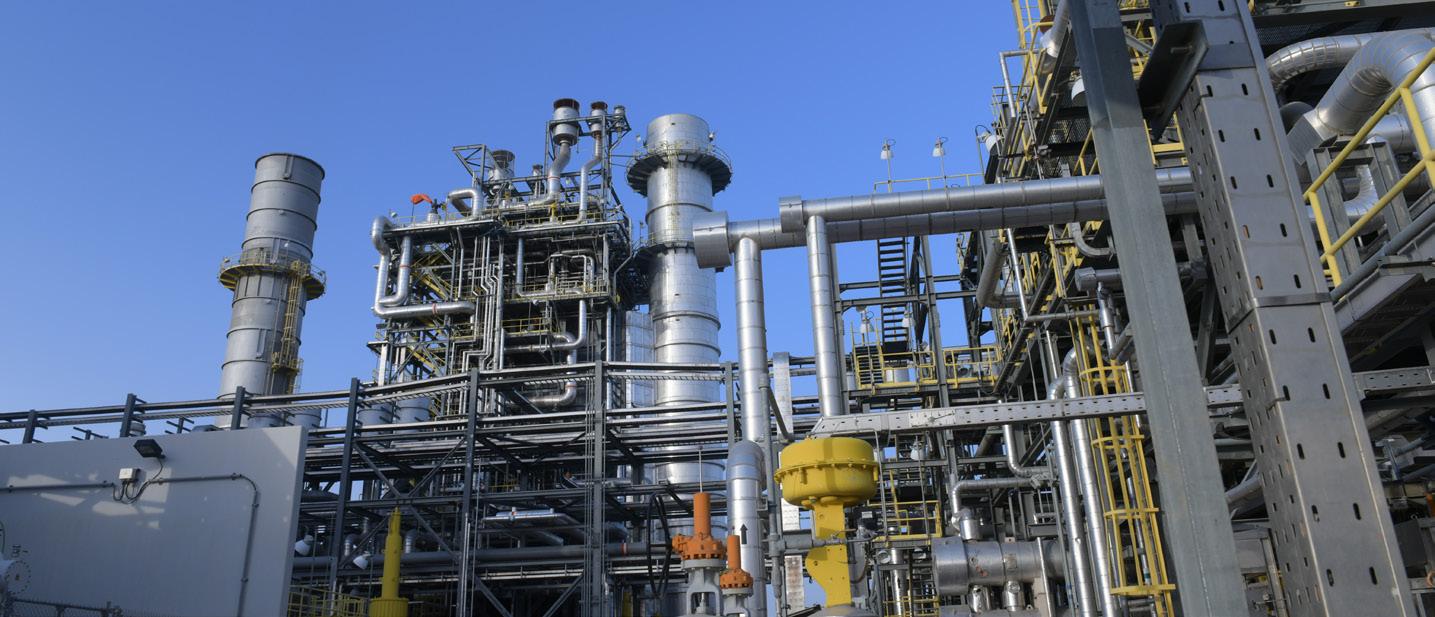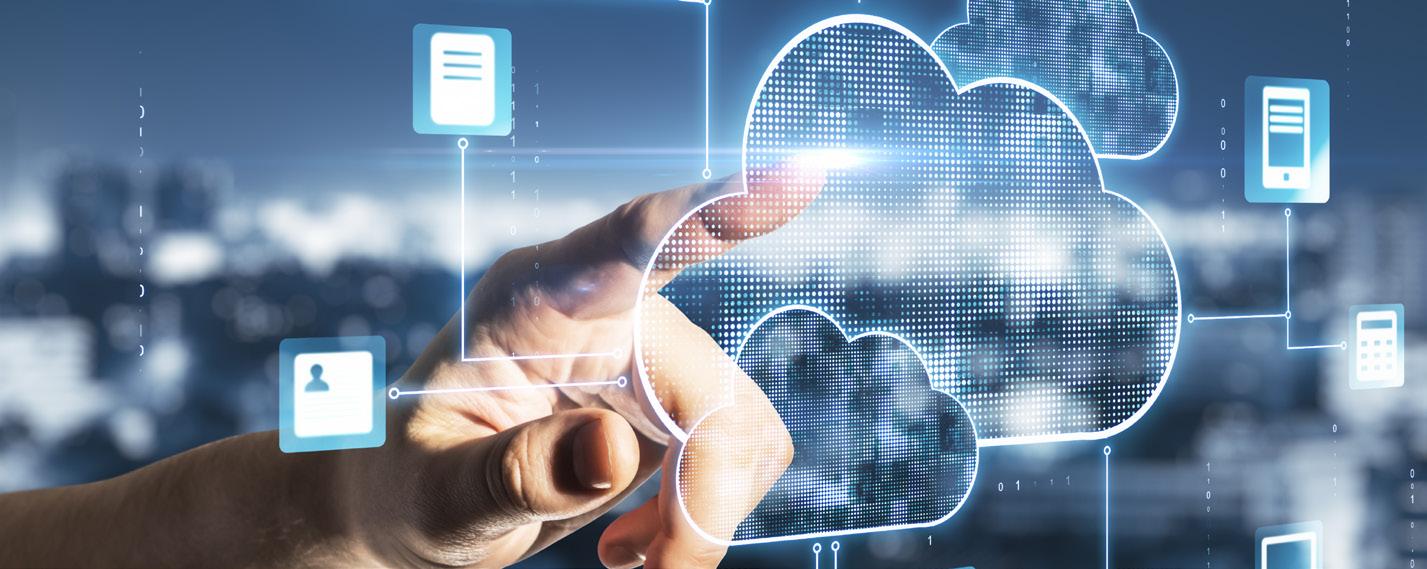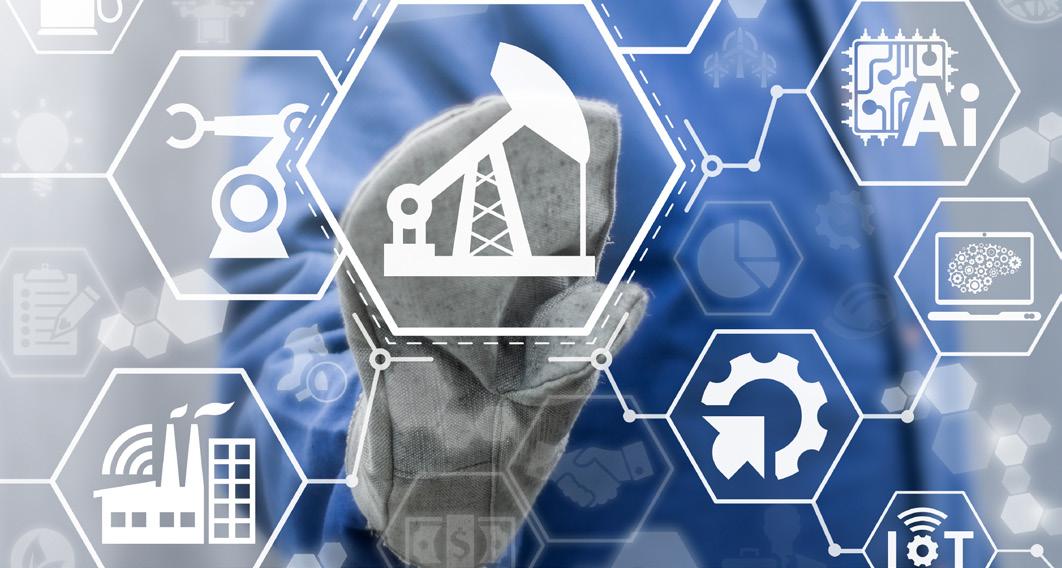
4 minute read
Unlocking Synergies: Digital Twins and Generative AI
Amidst a wave of innovation, the fusion of digital twins and generative AI emerges as a game-changer for asset owners in the oil and gas industry, enabling smarter decisions, optimized processes, and a transformative journey toward efficiency, sustainability, and resilience
As a researcher focused the last five years on better understanding the value of digital twins throughout the lifecycle of complex facilities, I have been amazed by the countless recent innovations being put to the work of mitigating significant challenges for asset owners, particularly in the operational context.
For example, Enhanced Predictive Maintenance involves integrating digital twin technology with predictive artificial intelligence (PAI) models. This enables operators to monitor equipment health in real time. By integrating sensor data, historical performance, and environmental conditions, digital twin human-machine interfaces can be programed to predict maintenance needs based on actual usage rather than solely relying upon the equipment manufacturers’ proposed maintenance schedule.
At an enterprise level, sharing of these large data sets, Generative Artificial Intelligence (Gen AI) algorithms can analyze vast amounts of data to identify patterns and anomalies. It predicts equipment failures, recommends maintenance schedules, and optimizes resource allocation at scale; helping operators reduce downtime, extend asset lifespan, and prevent catastrophic failures.
Optimized Production Scheduling
By incorporating virtual ‘guardrails’ into production operations decision criteria, the PAI can warn the operator of potential unintended consequences of operational settings by estimating the outcomes across multiple configuration scenarios leveraging latent insights from prior operational activities. Digital twins have been used to simulate production processes, considering variables like reservoir pressure, well flow rates, and equipment availability. Gen AI allows operators to optimize production schedules dynamically. Gen AI algorithms can suggest adjustments to schedules based on real-time data, market demand, and supply chain constraints. This evolving technology, released within the past 18 months, is a major turning point in terms of value realization. The value proposition includes increased production efficiency, reduced waste, and better alignment with market demand.
Resilient Supply Chain Management
Considering the many vulnerabilities exposed by the recent COVID-19 pandemic, another tangible benefit of Digital Twins is how they can model an entire supply chain, from raw material extraction to final product delivery. Operators gain visibility into interdependencies and vulnerabilities that their specific organization’s inputs require to reliably deliver their products across a complex global network of suppliers and stakeholders. Gen AI is frequently tasked with analyzing supply chain data, identifying bottlenecks, and suggesting alternative routes or suppliers. This results in improved supply chain resilience, reduced disruptions, and better risk management.
Energy Efficiency and Emissions Reduction
Another key benefit of Digital Twins is their ability to simulate energy consumption across facilities and product transport & distribution systems. Operators can identify energyintensive processes and optimize operations energy usage to better align with fluctuations between peak demand and excess supply, particularly when managing power available from renewable energy sources and storage devices. Gen AI is particularly well suited for these types of challenges as it can be prompted to explore optimization scenarios, suggesting more energy-efficient configurations. The value from this integration includes lower operational costs, reduced carbon emissions, and transparent compliance with ever- changing environmental stewardship guidelines and regulations.
Real-Time Decision Support
One key benefit of Digital Twins is that they provide a virtual sandbox for testing various proposed operational configuration scenarios. The capacity to highlight unintended outcomes beyond the immediate results of a configuration change is a great way to incorporate wisdom based on actual past experiences into the decision-making process. Too often, past errors in judgement are seldom incorporated as ‘lessons learned’. Economist Adam Smith suggested that the greatest economic benefit for all can be accomplished when individuals are acting in their own self-interest. I disagree, modern humans serving their own interests tend to ashamedly bury their mistakes, failing to capitalize on the insights those failures could bring to the enterprise.
Complex data systems that accurately capture and record prior decisions and their outcomes enable operators to simulate typical human responses to emergency conditions, market fluctuations, or equipment failures. This is where Gen AI can be used as a guardrail to process real-time data, providing actionable insights with instant consideration of past performance against present circumstances and future operational objectives. It enhances decision-making by recommending optimal decisions based on changing conditions. This results in faster response times, better strategic alignment, improved safety, and better resource allocation.
Personalized Training and Skill Development
With recent innovations in 3D Virtual/Augmented Reality immersive geospatial environments, digital twins can be segmented from live systems to provide a safe but realistic environment for training operators. Orientation of new operators has long-included simulated exposure to complex situations, but now it can be done with digital twins in near-real time without risking real assets. Gen AI is employed in developing customized training modules, adapting to each individual learning style and experience level. The value from this approach includes reduced training costs, faster skill acquisition, and improved operator competence.
Innovating Beyond Boundaries
Digital Twins of complex facility assets provide a foundation for directed innovation. Operators can experiment with novel approaches without affecting physical assets. Gen AI can be prompted to propose alternative solutions to wicked problems and enable research and development (R&D) teams to focus their iterative approach to instantiate viable solutions while exploring otherwise uncharted territories. This intentional use of Digital Twins with Gen AI in R&D translates into accelerated innovation, potential opportunities to create competitive advantage, and breakthrough discoveries.
In summary, the fusion of digital twins and generative AI empowers operators to make smarter decisions, optimize processes, and navigate the energy transition successfully. As the oil and gas industry embraces these technologies, it embarks on a transformative journey toward a more efficient, sustainable, and resilient future. If you are ready to take the next step in that journey, collaborate with us at the Future Digital Twin & Generative AI conference in Houston.
About the author: After more than three decades as a technology management specialist in the Oil & Gas industry, Randell McNair, D.B.A. is now an adjunct instructor, author, conference speaker, and practitionerscholar researching stewardship of insights from information assets such as digital twins, engineering databases, and document management systems. #informingpossibilities




